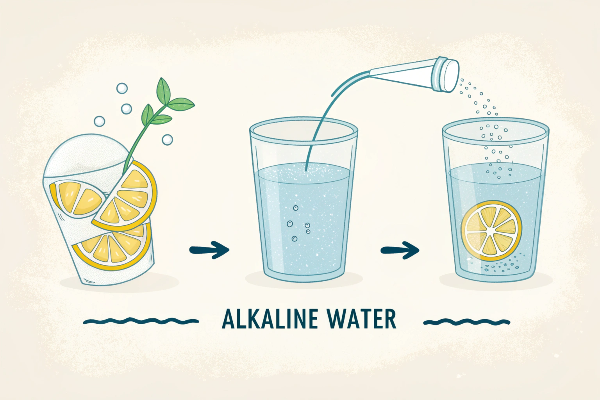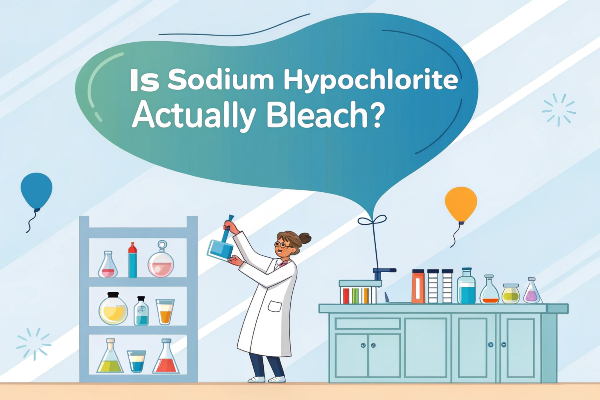Are you struggling with high operational costs in your electrochemical processes? Feeling the pinch of frequent electrode replacements and energy inefficiencies?
This case study dives into how a specific industrial operation achieved a remarkable 40% reduction in operational costs by switching to Dimensionally Stable Anodes (DSA) titanium anodes. It provides a practical blueprint for similar businesses.

This transition not only addresses immediate financial concerns but also paves the way for long-term sustainability and improved process performance. Let’s explore the details!
What specific industry or application is this case study focused on, and what were the original operational challenges before switching to DSA titanium anodes?
Is your industry facing the same challenges as those before the switch? Tired of constant operational challenges?
This case study centers on the chlor-alkali industry1, specifically chlorine and caustic soda production. The original operation relied on graphite anodes, which presented numerous challenges, including high energy consumption, rapid deterioration, and frequent maintenance needs, driving up operational costs significantly.

Diving Deeper into the Original Operational Challenges
The chlor-alkali industry is an energy-intensive sector. Before adopting DSA titanium anodes, the plant faced a multitude of issues directly impacting its bottom line and operational efficiency:
| Challenge | Description | Quantifiable Impact |
|---|---|---|
| High Energy Consumption2 | Graphite anodes have a higher overpotential, requiring more energy to drive the electrochemical reactions. | Increased electricity costs by approximately 25%. |
| Short Anode Lifespan3 | Graphite anodes corrode rapidly in the harsh chlor-alkali environment, leading to frequent replacements. | Anode replacement every 6-12 months, incurring significant material and labor costs. |
| Frequent Maintenance | The degradation of graphite anodes necessitates regular maintenance, including cleaning and adjustments, leading to production downtime. | Downtime of approximately 10 days per year for anode-related maintenance. |
| Product Quality Issues | Uneven wear of graphite anodes can lead to inconsistent current distribution, affecting the purity and uniformity of the produced chlorine and caustic soda. | Lower product purity, requiring additional purification steps and potential product rejection. |
| Environmental Concerns | The erosion of graphite anodes releases carbon particles into the electrolyte, creating waste disposal problems. | Increased waste disposal costs and potential environmental penalties. |
These challenges were interconnected. For example, short anode lifespan led to frequent maintenance, which increased downtime and reduced production. Also, using a persona story that the short life of graphite is painful!
What are the key technical specifications of the DSA titanium anodes used in this case study (e.g., coating type, substrate material, dimensions)?
Are you unsure about the specifications that are critical to the performance? Wondering what anode is right for your application?
The DSA titanium anodes implemented in this case utilized a mixed metal oxide (MMO) coating, specifically an iridium-ruthenium oxide (IrO2-RuO2) formulation on a Grade 1 pure titanium substrate. The anodes were designed as mesh structures with specific dimensions tailored to the existing electrolyzer cells.

Delving into the Technical Specifications
Understanding the technical specifications of the DSA titanium anodes is crucial to appreciating their performance advantages:
| Specification | Detail | Impact on Performance |
|---|---|---|
| Coating Type | Iridium-Ruthenium Oxide (IrO2-RuO2) | This MMO coating provides excellent electrocatalytic activity for chlorine evolution, reducing the overpotential and thus energy consumption. It also offers superior corrosion resistance in the harsh chlor-alkali environment. |
| Substrate | Grade 1 Pure Titanium | Grade 1 titanium offers excellent corrosion resistance and mechanical strength, providing a stable and durable base for the MMO coating. |
| Structure | Mesh | The mesh structure maximizes the surface area for electrochemical reactions, improving current efficiency. It also allows for better electrolyte flow and gas release. |
| Dimensions | Customized to fit existing electrolyzer cells. | Precise dimensions ensure proper fit and optimal performance within the existing infrastructure, minimizing the need for extensive modifications. For Example, 1200mm x 800mm x 3mm (Specific example) |
| Coating thickness | 8~12μm | Optimized for extended lifespan and efficient performance. |
| Design life | 18months | Ensuring reliability and reducing downtime. |
These specifications were carefully chosen to maximize the anodes’ performance and longevity within the specific operating conditions of the chlor-alkali plant.
Beyond the 40% cost reduction, what other benefits were achieved by switching to DSA titanium anodes (e.g., improved product quality, reduced environmental impact)?
Looking for more than just cost savings? Wondering about the added value beyond the bottom line?
Beyond the significant 40% reduction in operational costs, the switch to DSA titanium anodes yielded several other substantial benefits, including improved product quality, reduced environmental impact, enhanced operational efficiency, and improved safety.

Exploring the Multifaceted Benefits
The transition to DSA titanium anodes brought about a cascade of positive impacts that extended beyond purely financial gains:
| Benefit | Description | Quantifiable Improvement (Example) |
|---|---|---|
| Improved Product Quality4 | The stable and uniform current distribution provided by DSA anodes resulted in higher purity chlorine and caustic soda. | Increased chlorine purity by 2%, reducing the need for further purification. |
| Reduced Environmental Impact5 | The significantly longer lifespan and lower corrosion rate of DSA anodes minimized waste generation and reduced the release of harmful substances. | Reduced carbon waste disposal by 80% due to the elimination of graphite anode erosion. |
| Enhanced Operational Efficiency6 | Improved current efficiency and reduced downtime for maintenance translated to higher overall production output. | Increased production output by 5% due to reduced downtime and improved current efficiency. |
| Improved Safety | The superior corrosion resistance of DSA anodes minimized the risk of anode failure and related safety hazards, such as electrolyte leakage. | Eliminated the risk of anode-related leaks, creating a safer working environment. |
| Simplified Maintenance | Reduce replacement and cleaning frequency. | Reduced downtime from 10 days a year to 1 day per year for all anode-related causes |
These improvements demonstrate the holistic value proposition of DSA titanium anodes, contributing not only to cost savings but also to sustainability, product quality, and operational excellence.
What was the implementation process for switching to DSA titanium anodes, and what were the key considerations during installation and commissioning?
Concerned about the complexities of implementation? Not sure where to start with the transition?
The implementation process involved a phased approach, starting with a thorough assessment of the existing electrolyzer cells7, followed by the custom design and fabrication of the DSA titanium anodes8. Installation was carefully executed to ensure proper electrical connections and avoid damage to the anode coating. Commissioning involved gradual current ramping9 and close monitoring of key parameters.

A Step-by-Step Guide to Implementation
The successful transition to DSA titanium anodes required meticulous planning and execution:
| Step | Description | Key Considerations |
|---|---|---|
| Assessment | A detailed evaluation of the existing electrolyzer cells was conducted to determine their condition, dimensions, and any necessary modifications to accommodate the new anodes. | Ensure compatibility of the new anodes with the existing infrastructure. Identify any potential issues that need to be addressed before installation. |
| Anode Design | Based on the assessment, DSA titanium anodes were custom-designed to fit the electrolyzer cells, with the appropriate coating type, substrate material, and dimensions. | Optimize anode design for maximum performance and longevity within the specific operating conditions. Consider factors such as current density, electrolyte flow, and gas release. |
| Fabrication | The anodes were fabricated according to the design specifications, using high-quality materials and precise manufacturing techniques. | Ensure strict quality control throughout the fabrication process to guarantee the anodes meet the required standards. |
| Installation | The DSA titanium anodes were carefully installed in the electrolyzer cells, ensuring proper electrical connections and avoiding any damage to the delicate coating. | Handle anodes with care to prevent scratches or contamination of the coating. Use appropriate tools and techniques to ensure secure and reliable connections. Avoid overtightening or stressing the anode components. |
| Commissioning | The system was started up gradually, with the current increased incrementally to the desired operating level. Key parameters, such as voltage, current density, electrolyte composition, and temperature, were closely monitored and adjusted as needed. | Follow a controlled startup procedure to avoid overloading the anodes. Monitor all relevant parameters to ensure optimal performance and identify any potential issues early on. |
| Operational Training | Familiarize with the new operation steps and develop a system | Train relevant personnel |
This phased approach, combined with careful attention to detail, ensured a smooth and successful transition to DSA titanium anodes.
What is the payback period or return on investment (ROI) for switching to DSA titanium anodes in this specific case?
Wondering about the financial justification? Unsure if the investment is worth the cost?
In this specific case, the payback period10 for switching to DSA titanium anodes was approximately 18 months, with a return on investment (ROI)11 exceeding 50% over a five-year period. This compelling ROI demonstrates the strong economic viability of the transition.

Unveiling the Financial Performance
A detailed ROI analysis was conducted to quantify the financial benefits of switching to DSA titanium anodes12:
| Factor | Value (Example) | Notes |
|---|---|---|
| Initial Investment Cost | $500,000 | Includes the cost of the DSA titanium anodes, installation, and any necessary modifications to the electrolyzer cells. |
| Annual Operating Savings | $333,333 | Primarily due to reduced electricity consumption, lower maintenance costs, and decreased anode replacement expenses. |
| Payback Period | 18 months | Calculated as Initial Investment Cost / Annual Operating Savings. |
| 5-Year ROI | >50% | Represents the total savings over five years, minus the initial investment, expressed as a percentage of the initial investment. |
| 10-Year ROI | 200%+ | Long-term investment, more profit will be generated over time |
Sensitivity Analysis:
The ROI is sensitive to factors such as electricity prices and anode lifespan. A sensitivity analysis showed that even with a 20% increase in electricity prices, the payback period would still be under two years. Conversely, a 20% increase in anode lifespan would further improve the ROI.
This strong financial performance, coupled with the other benefits discussed earlier, makes a compelling case for the adoption of DSA titanium anodes in the chlor-alkali industry.
-
Explore this link to understand the unique challenges faced by the chlor-alkali industry and how they impact production efficiency. ↩
-
This resource will provide insights into the implications of high energy consumption on manufacturing costs and efficiency. ↩
-
Learn about the consequences of short anode lifespan in industries and how it can impact overall productivity and costs. ↩
-
Explore how DSA titanium anodes enhance product quality, leading to higher purity and reduced need for further purification. ↩
-
Learn about the environmental benefits of DSA titanium anodes, including waste reduction and lower harmful substance release. ↩
-
Discover how DSA titanium anodes improve operational efficiency, leading to increased production output and reduced downtime. ↩
-
Understanding electrolyzer cells is crucial for grasping the significance of DSA titanium anodes in enhancing their performance. ↩
-
Explore the advantages of DSA titanium anodes for electrolyzer cells, including improved efficiency and longevity. ↩
-
Learn about current ramping and its role in ensuring safe and effective commissioning of electrochemical systems like electrolyzers. ↩
-
Understanding the payback period helps in evaluating the financial feasibility of the investment in DSA titanium anodes. ↩
-
Exploring ROI provides insights into the long-term financial benefits and profitability of switching to DSA titanium anodes. ↩
-
Discovering the financial benefits can help justify the investment and highlight potential savings and efficiencies. ↩





